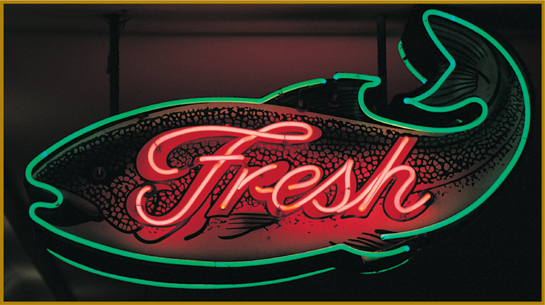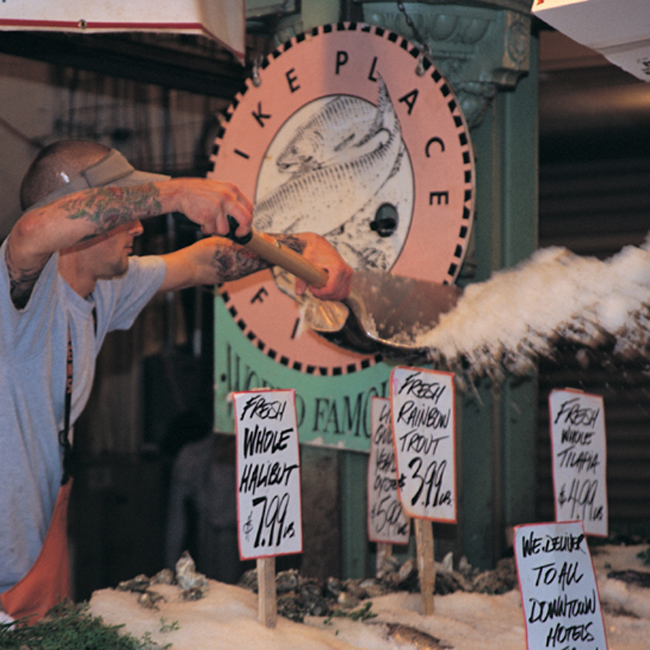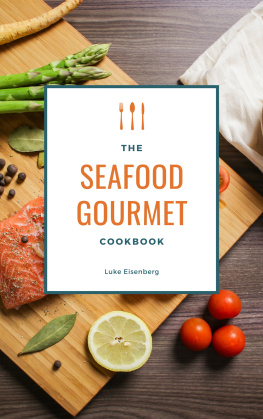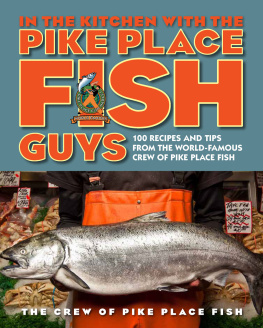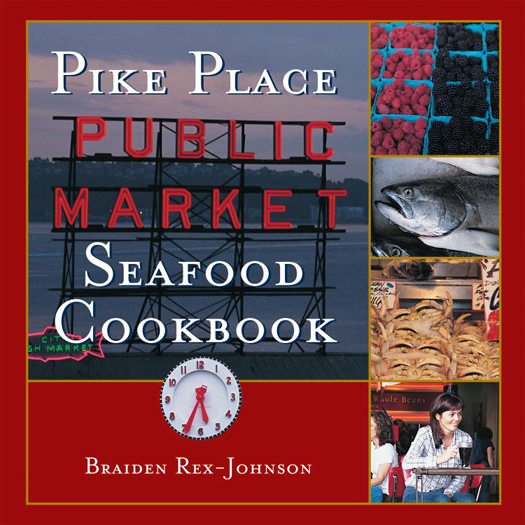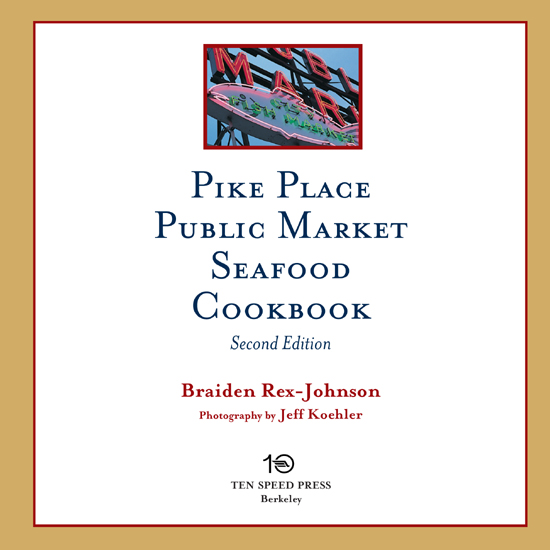Copyright 2005 by Braiden Rex-Johnson
Photographs copyright 2005 by Jeff Koehler
All rights reserved. Published in the United States by Ten Speed Press, an imprint of the Crown Publishing Group, a division of Random House, Inc., New York.
www.crownpublishing.com
www.tenspeed.com
Ten Speed Press and the Ten Speed Press colophon are registered trademarks of Random House, Inc.
Library of Congress Cataloging-in-Publication Data is on file with the publisher
eISBN: 978-1-60774-377-4
Cover design by Cathey Flickinger
v3.1
To our beloved Beauregard (Bo-Bo) Johnson,
a feline who never met a singing scallop or
Dungeness crab he didnt like.
November 22, 1988August 10, 2004
CONTENTS

C ookbooks are a lot like children. They take at least nine months to produce, come out with great fanfare, then sink or swim depending on their merit. So it was quite a thrill when the first edition of the Pike Place Public Market Seafood Cookbook came out in 1997, earned good reviews, and went on to sell 20,000 copies around the world.
In 2004, when the editors at Ten Speed Press asked me to choose the 50 best recipes for an abridged edition of the original, I was (naturally) elated. What mother wouldnt crave the chance to revisit and refashion a beloved child into a snappy, streamlined version?
But as I started working, my conscience flared. I realized my new book would never, could never be anything like the original. Even back in 1997, certain fish species were being overfished or caught as bycatch (a term that means unintended catch, such as juvenile fish, marine birds, or sea turtles) almost to the point of extinction. I purposefully excluded them from my books encyclopedic listing of fish.
Today, many other fish species highlighted in my original book are now squarely on the endangered list. In fact, the Marine Stewardship Council (MSC; msc.org), an international nonprofit organization that promotes sustainable fisheries, estimates that overfishing occurs in 60 percent of the worlds stocks.
But the news is not all grim. Here in the Pacific Northwest, our wild salmon stocks are well managed and safe to eat. In fact, the MSC recognized Alaskan salmon as the first United States fishery to be certified as sustainable. Only fisheries that meet strict, peer-reviewed standards of sustainability can qualify. Alaskan salmon is now eligible to bear the MSC eco-label, which lets consumers know that when they buy MSC-labeled seafood, they are supporting healthier oceans and a healthier environment. Alaskan halibut is also in wide supply, as are the states prime weathervane scallops and spot prawns.
Environmentally friendly farm-raised clams, mussels, and oysters line our shores. Their innovative cultivation techniques have resulted in the Monterey Bay Aquarium and other environmental groups rating Northwest-grown clams, mussels, and oysters at the top of their green list. Even geoducks, the largest clams in North America, have recently been successfully (and profitably) farmed for the first and only time in the world in Northwest waters.
Albacore tuna remains a widely available summertime treat for the grill. Farm-raised Idaho trout is also in excellent supply. And crabs from the carefully managed Dungeness crab fishery are not only a joy, but safe, to eat.
The finfish and shellfish varieties highlighted in the recipes in this book are (so far) safe to buy and eat. And the task of choosing safe, sustainable seafood has grown much easier thanks to groups such as the Monterey Bay Aquarium and the National Audubon Society, which produce guides listing the types of currently sustainable seafood. Fish swim on and off the charts and the charts dont always agree, so check out the Web sites at audubon.org or mbayaq.org for the latest listings.
In addition to careful selection of seafood, here are half a dozen other easy ways to conserve our oceans resources, while saving your pocketbook as well.
Buy fish in season. When large quantities of a fish or shellfish are running and widely available, they are often sold at bargain prices. For example, fresh wild salmon caught during the bountiful summer and early fall runs is much less expensive than salmon caught during the winter months.
Buy fish that are less well known or popular. Everybody knows how delicious fresh king salmon can be, but how many people have tried lesser-known species, such as coho or keta? Or how about farm-raised trout, tilapia, or catfish?
Serve smaller portions of finfish. Because seafood is a lean, pure protein with very little waste (especially if you buy fish fillets rather than steaks), consider serving it in smaller portions than you might chicken or beef. Not too long ago eight ounces of finfish (such as salmon or halibut) was considered an average-size portion. Nowadays, many Americans actually get too much protein in their diets; I find that for myself and my husband, anywhere from four to six ounces of finfish is just enough, while for a family of four, often one to one-and-one-half pounds is adequate.
When dining out, order a seafood appetizer (or two) as your entre. Or order a seafood entre, eat only half, and ask for a to-go box for the rest. I have been using the latter technique for years, mostly because I can never finish the typically gargantuan portions (sometimes upwards of eight to ten ounces) offered at many restaurants. I eat my leftovers the next day for lunch, or freeze them for later use in seafood stews or soups. And ordering several seafood appetizers in place of a main course is one of the least wasteful and inexpensive (not to mention fun!) ways to experiment with and experience a variety of seafood dishes.
Serve seafood as a supporting part of a meal. When combined with an extender, such as potatoes, pasta, grains, or vegetables, much less seafood per person is needed. Seafood chili, pasta, and risotto are just a few suggestions of how to serve smaller portions of seafood while still providing satisfying meals. This is also a healthful way to eat, since grains (particularly whole grains) and beans provide much-needed doses of soluble and insoluble fiber. See the section for full-blown examples.
Use seafood combinations to stretch your dollar. When making seafood dishes, use a variety of finfish and shellfish. For example, mix Alaskan spot prawns (an expensive choice) with farm-raised mussels and/or clams and fresh halibut (typically less expensive choices) to cut costs.
With a little thoughtful planning on our part today, generations to come will continue to savor the healthful and satisfying bounty of our vibrant Northwest waters. And our consciences will be the better for it.
Braiden Rex-Johnson
March 2005
